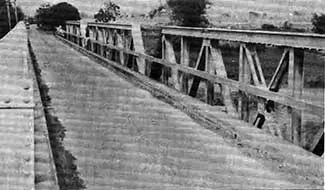Life and Economics in Lian, Batangas Early in the 20th Century
An Anthropological paper1 written by one Pastor M. Layosa in 1927 offers a compelling descriptive picture of the life end economics in the western Batangas town of Lian early in the twentieth century. According to Layosa, the entire town of Lian was an “hacienda” or estate that was owned “by the Jesuit order of the Colegio de San Jose of Ermita, Manila. From 15 March 1925, the property was leased to the widow and children of Don Pedro P. Roxas.
All the lands of the estate were, in turn, rented out to townspeople who were contracted to pay pre-arranged amounts in cash or in kind to the landlords. As lessees, they were called “inquilinos,” the term probably borrowed from Chile2 – although not exactly the same in meaning – and was somewhat similar to the arrangements between the serfs and their lords in feudal Europe.
The poblacion or town center was divided into 380 lots with a total area in excess of 200 thousand square meters. The lots were classified either first or second class, presumably depending on location and quality of the land. Tenants of first class lots paid ₱0.25 per square meter while those who took second class lands paid ₱0.20. Each parcel of land was leased for a period of three years, but this was renewable.
Agricultural lands were also rented out; and these were classified as either highland or lowland. The highland plots were those often planted with sugarcane, corn, upland rice and other crops considered minor in Lian such as beans, bananas and mangoes. Rent per hectare ranged from ₱6.50 to ₱6.67 and payments were made during the months of March and June.
Lowland plots, on the other hand, were exclusively planted with rice; and portions of each harvest were also used as payment for the rent.
Frequently, the “inquilinos” did not directly plant the plots that they rented, and instead subleased these to peasants who, in turn, worked the fields. The act of subleasing the rented plots was called the “kasama” (companion) system. In this system, whether in the sugarcane or rice plantations, the “inquilinos” provided the capital while the peasants provided the labor. The relationship between the two was more of a partnership, however, than that of master and servant.
Layosa wrote that the location of Lian was something of a handicap because it could be cut off from the rest of the province by the rainy season. Inhabitants of the town were linked to the provincial road by a flimsy bamboo bridge over the Palico River during the dry season, when the waters recede and were shallow. The bridge could only accommodate foot traffic.
When the monsoon rains started pouring, however, the waters of the river would rise and the bridge would be washed away. Boats would be needed to ferry travelers from one bank of the river to the other. This description of Lian, however, must have been true when the estate was still directly managed by the Jesuits. By 1916, the Palico Bridge linking Lian with Nasugbu was constructed by the American administration3.
As per the 1918 Philippine Census, Layosa wrote, Lian’s population was 5,104. (As per the 2015 Census, this figure had risen to 52,660.) The townspeople were overwhelmingly Tagalog, and the number of Visayans and Ilocanos was, Layosa said, negligible.
The standard of living for most of the town’s inhabitants was “ordinary.” Most of the people lived in nipa houses which were always kept tidy. Those who benefited from the sugar boon of 1920 had houses built with sturdier materials.
The people of the town were industrious, and Layosa wrote that he had not heard of any case when labor had to be brought into Lian from other towns. Because of this industry, he added, there was no pauperism in the town, i.e. there were no abjectly poor people.
Moreover, there was a sense true egalitarianism in the town. Layosa wrote, “…rich and poor go about without social distinction. There is no preferential place for this or that person just because he is rich; nor is there discrimination just because he is poor. The inhabitants simply mix with each other with admirable sincerity and companionship.”
Agriculture was the town’s primary preoccupation, and because the cultivation of the land was based on a system of leases and subleases, rent was a touchy issue among the town’s inhabitants.
Layosa wrote that the rental rates charged by the Jesuits before were “high;” and that the Roxases, upon their lease of the property, raised these even more. This, according to Layosa, brought a feeling of unrest and dissatisfaction among the inhabitants of the town. Or course, by contemporary standards, these rates seem like they were practically giveaways.
Unlike in Nasugbu, however, where land administrators were practically dictators, Layosa wrote that in Lian, they had to tread more carefully. The people in Lian were “more rebellious and more united so that grievances are supported by all.” Consequently, these administrators rather tended to respect the rights of the inhabitants of Lian more.
2 “Inquilino,” Wikipedia.
3 “Quarterly Bulletin Volumes 6-8,” by the Bureau of Public Works, April 1917.

